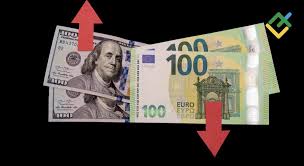Introduction to the Euro and Dollar
The Euro and the Dollar are two of the most influential currencies in the world. As a traveler, investor, or business owner, understanding their relationship is crucial. Whether you’re planning a trip to Europe or trading on foreign exchange markets, related:https://www.bloomberg.com/quote/eurusd:cur euros to dollars knowing how these currencies interact can impact your financial decisions significantly.
Every day, millions of people convert euros to dollars for various reasons—whether it’s shopping online, transferring money abroad, or managing investments. But what exactly drives this exchange rate? And how can you ensure that you get the best value when converting your hard-earned cash? Let’s dive into the fascinating dynamics between these two powerhouse currencies and uncover everything you need to know about exchanging euros for dollars.
Factors Affecting the Exchange Rate
Exchange rates fluctuate due to a variety of factors, and understanding these can help you navigate currency conversions better.
One significant factor is interest rates. Central banks influence currency value through monetary policy changes. A higher interest rate typically attracts foreign capital, boosting the currency’s strength.
Economic indicators also play a crucial role. GDP growth, unemployment rates, and inflation data provide insight into a country’s economic health. Positive reports often strengthen the euro against the dollar or vice versa.
Political stability cannot be overlooked either. Countries with stable governments usually enjoy stronger currencies compared to those facing uncertainty or turmoil.
Market speculation affects exchange rates significantly. Traders’ perceptions about future performance can lead to rapid shifts in value as they react to news and trends in real-time.
Historical Performance of EUR/USD
The historical performance of the EUR/USD exchange rate reveals intriguing trends. Since its introduction in 1999, this pair has experienced significant volatility.
Initially, the euro gained strength against the dollar, peaking around 2008 when it surpassed $1.60. This surge was fueled by economic growth in Europe and financial crises affecting the U.
S.
However, various factors led to shifts in value over time. The Eurozone debt crisis marked a notable decline for the euro from 2011 onwards. Investors grew cautious as some member states faced economic hardships.
In recent years, recovery efforts and differing monetary policies have influenced fluctuations once more. As central banks adjust interest rates and combat inflationary pressures, traders keep a close watch on this dynamic currency pair’s movements.
Understanding these patterns can provide valuable insights for those looking to convert euros to dollars effectively.
Current State of the EUR/USD Exchange Rate
The current state of the EUR/USD exchange rate reflects a dynamic landscape shaped by economic indicators, geopolitical developments, and market sentiment. As of now, the euro stands strong against the dollar but is influenced by various factors. related:https://www.bloomberg.com/quote/eurusd:cur euros to dollars
Recent data from inflation reports has caught traders’ attention. The European Central Bank’s monetary policy adjustments play a crucial role in this fluctuation. Investors are keenly watching for hints on interest rates that could sway their decisions.
Moreover, global events continue to create ripples in currency markets. Political tensions or trade agreements can lead to swift changes in perceived value between these two currencies.
Market analysts encourage staying updated with real-time data to capture potential opportunities. Monitoring financial news sources provides valuable insights into each currency’s performance and future prospects.
How to Convert Euros to Dollars
Converting euros to dollars is a straightforward process, especially with today’s digital tools. Start by checking the current exchange rate through reliable sources. Websites like Bloomberg offer real-time updates that can guide your conversion.
You have several options for making the actual currency exchange. Banks typically provide this service but may charge fees or offer less favorable rates. Online platforms and currency converters often present competitive rates and lower charges.
If you’re traveling, consider using local ATMs to withdraw cash directly in dollars. They usually give better rates than exchanging at airports or hotels.
Before finalizing any transaction, double-check all figures to ensure accuracy. Small discrepancies could affect how much you ultimately receive in dollars from your euros.
Tips for Getting the Best Exchange Rate
To secure the best exchange rate when converting euros to dollars, timing is essential. Keep an eye on market trends and set alerts for favorable rates.
Consider using online currency converters or financial apps. They often provide real-time updates and comparative rates across various platforms. This way, you can spot a good deal quickly.
When exchanging cash, avoid airport kiosks. These places typically charge higher fees and offer poorer rates compared to local banks or dedicated currency exchanges.
If you’re using your credit card abroad, opt for transactions in euros rather than dollars. This can save you from extra conversion fees imposed by merchants.
Don’t hesitate to negotiate with your bank or exchange service if you’re dealing with larger amounts of money—it could lead to better terms for you.
Conclusion
The relationship between the euro and the dollar is complex yet fascinating. Understanding how different factors influence their exchange rate can help individuals make informed decisions when converting euros to dollars.
Historical data shows that fluctuations in this currency pair often reflect broader economic trends, including interest rates, inflation, and geopolitical events. Staying updated on current market conditions not only aids in making timely conversions but also maximizes potential gains from favorable rates.
For those looking to convert euros into dollars effectively, utilizing various methods such as online converters or local banks can be advantageous. It’s essential to compare rates and choose a service with minimal fees for better value. related:https://www.bloomberg.com/quote/eurusd:cur euros to dollars
By keeping these insights in mind, you’ll enhance your chances of securing the best possible exchange rate every time you need to convert your currencies.






